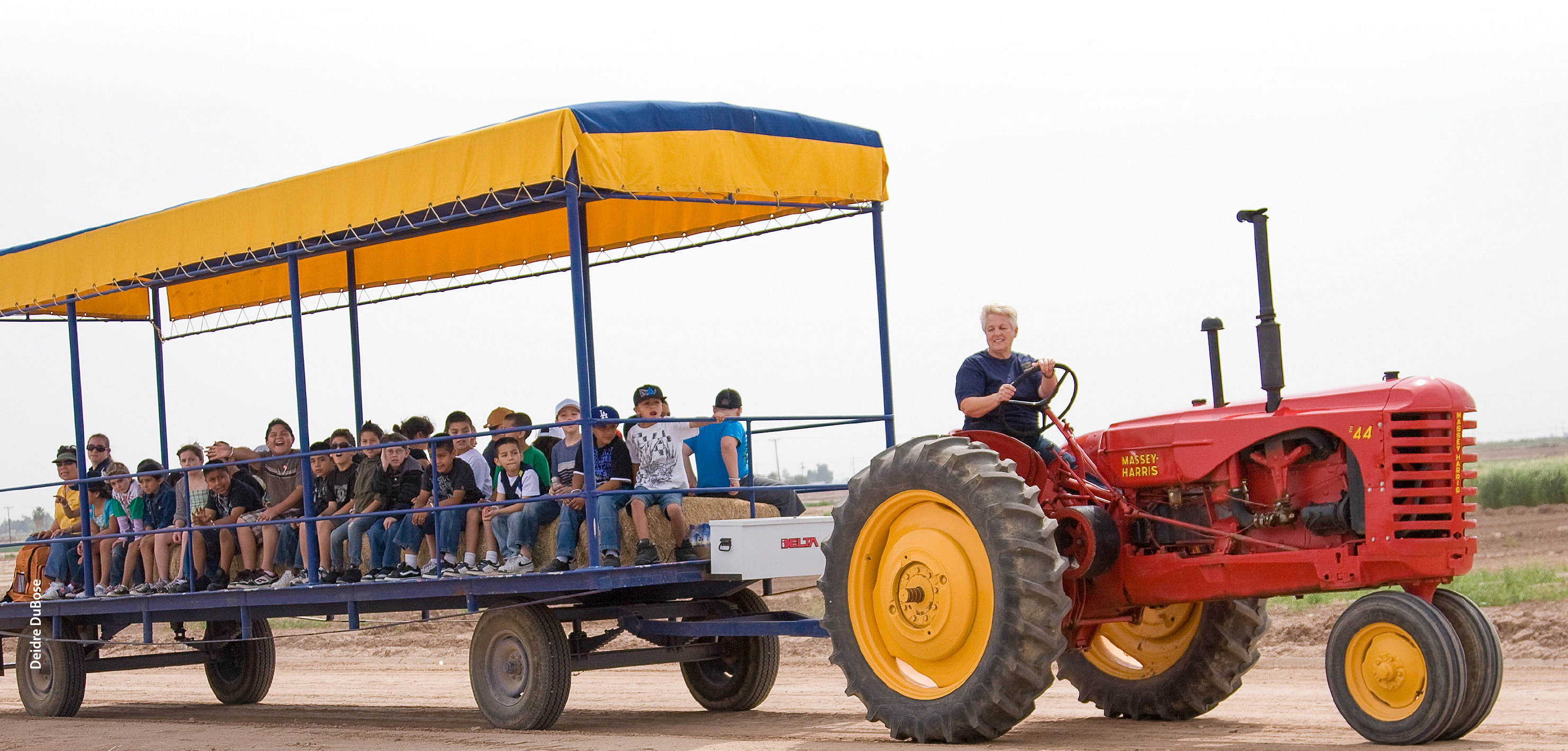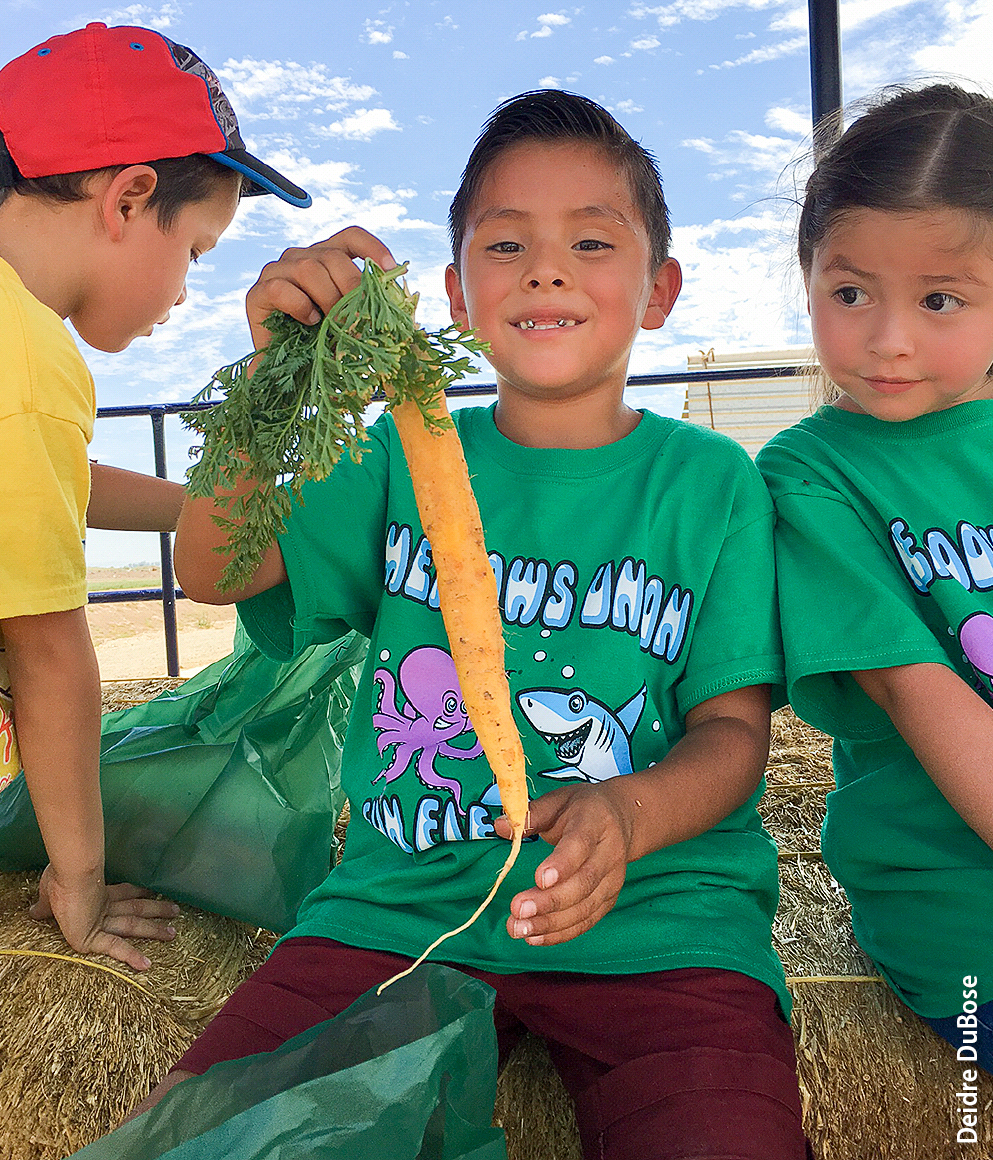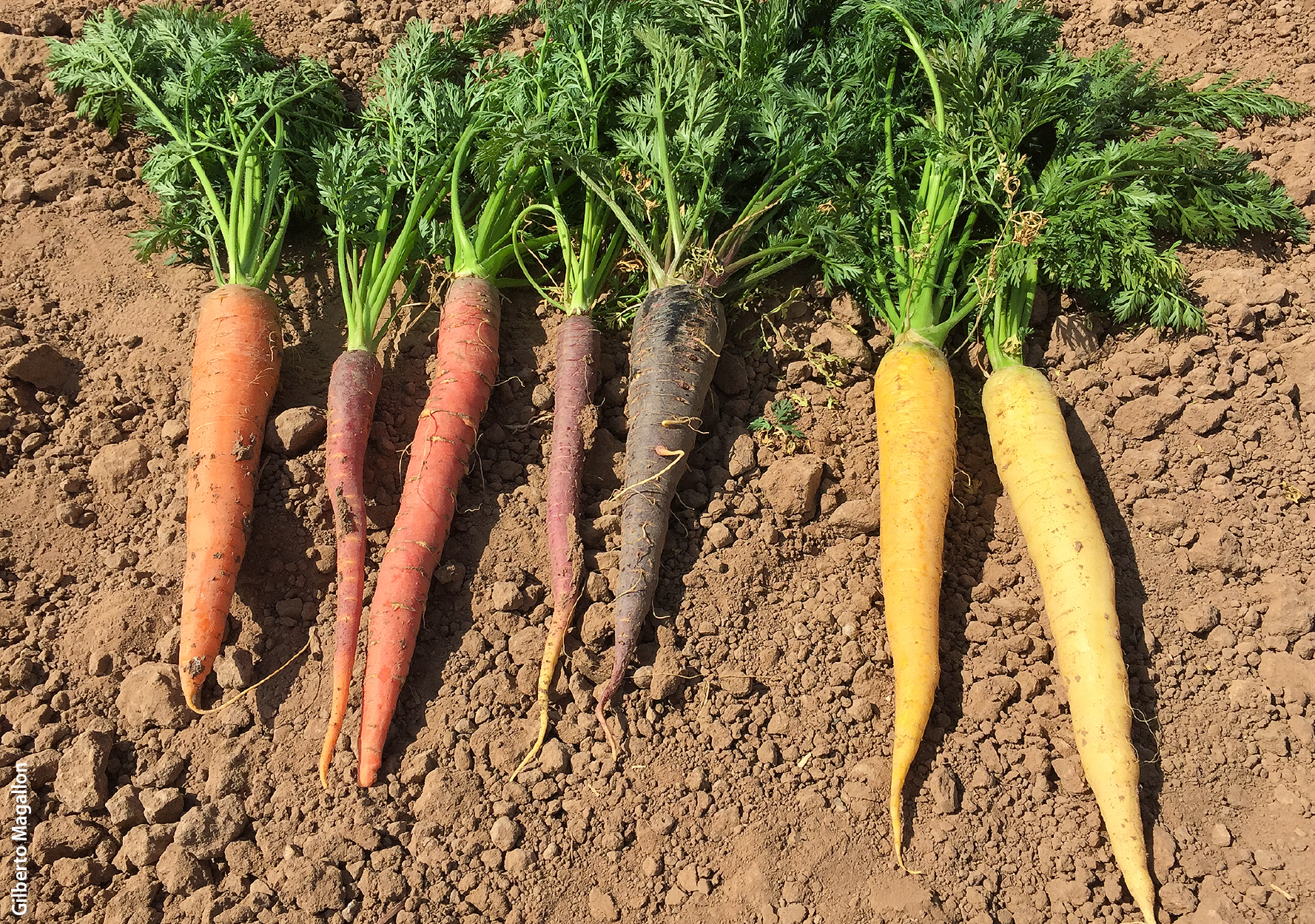All Issues
Desert REC: Educational outreach and crop breeding
Publication Information
California Agriculture 71(4):201-203. https://doi.org/10.3733/ca.2017a0047
Published online November 15, 2017
PDF | Citation | Permissions
NALT Keywords
Summary
Located in the Imperial Valley, this research station runs UC ANR's biggest agricultural outreach program and hosts the largest public carrot breeding program in the Americas.
Full text
New carrot varieties are evaluated at Desert REC for field production performance. Seed companies include their top-selling carrot varieties, along with the best new carrot varieties they have developed, among the nearly 200 entries in the annual carrot field trials at Desert REC. As the best new varieties go on to replace older varieties, carrot growers and consumers benefit from crop improvements tested in these trials.
The Imperial Valley is a place of extremes — and that's a big part of what makes the UC ANR Desert Research and Extension Center (REC) so useful.
Average high temperatures at Desert REC exceed 100°F for a full 4 months in the summer, and rainfall totals around 3 inches per year. But the flip side of the scorching summer is a pleasantly mild winter that makes the 225-acre research center a great spot for plant breeding. For a half century, the U.S. Department of Agriculture's carrot breeding program has been based here in the cool months (split with summers in Wisconsin). And many varieties of other crops have been developed at Desert REC over the decades — from alfalfa and asparagus to barley and lettuce.
The hot climate and issues such as the salinity of the region's irrigation supply (drawn from the Colorado River) create a set of unique challenges for agriculture in the Imperial Valley. The search for ways to manage those challenges has forged strong links between researchers and the growers who work the valley's 500,000 acres of farmland. Desert REC, which opened in 1912 as the Meloland Field Station, today operates with strong support from local farms and livestock operations as well as the Imperial Irrigation District — bringing in cash contributions as well as in-kind donations of everything from vegetable seedlings to porta-potties.
That farming works at all in such an inhospitable climate is a source of wonder for many of the tourists that visit the center in the winter. Those visitors bring revenue and volunteer labor to Desert REC that then help to support the center's thriving youth outreach program, Farm Smart.
Farm Smart
Established in 2001, the Farm Smart agricultural outreach program is the largest in the UC ANR REC system. It includes two programs — one targeting grades K-12, the other adults — and has now logged more than 137,000 visitors.
The children's program changes with the seasons, covering dairy and livestock in fall, corn in winter, vegetables in early spring, and pest management in late spring. It's a hands-on program (with plenty of eating) that explains where food comes from and how farms work. Each day ends with the children visiting the center's 3-acre vegetable garden for a mini-harvest. “Even though they've grown up here, a lot of them have never picked a vegetable to eat,” said Farm Smart Community Educator Stephanie Collins, one of the program's two staff members.
The program hosts about 10,000 K-6 students annually, in groups of 50 to 100. Farm Smart attracts classes from every school district in the region. It reaches a substantial fraction of all children in Imperial County, which has a total population of 177,000.
In the winter, Farm Smart hosts a week-long outreach program for local high school students that focuses on careers in agriculture. Students talk with researchers and growers about their work, and learn about modern farm technology by using an iPad to control an irrigation system and climbing into the cab of a GPS-guided tractor. Representatives from the USDA and the University of Arizona Yuma — the nearest four-year college offering degrees in agriculture, science and engineering — talk with students about degree and career options in agriculture and related fields. Imperial County has the lowest per-capita income in California, and the farm and livestock industries offer some of the best local job opportunities for college graduates (through a recent agreement , Imperial Valley community college students can transfer to the Yuma campus and pay tuition at the in-state rate).
In addition to the two student programs, Farm Smart runs wintertime tours for tourists curious about Imperial Valley agriculture. For a $25 fee, visitors can go on a day-long tour that includes science presentations, the obligatory hayride, and the opportunity to take home an armload of produce from the vegetable garden. Revenue from the adult-visitor program helps support the Farm Smart programs for children. It also operates as a volunteer recruiting tool: visitors who'd like to stay and help out at Desert REC can park their RVs on site for free (there are four sets of RV hookups) for a few days or weeks. Collins said they get about 2,000 hours of volunteer labor that way each year.
“There's no fee, but it's a lot of work,” she said
Carrot breeding
The research at Desert REC is a big part of what makes the tours so interesting. Among the largest and longest-running strands of work is the development of new carrot varieties.
Since the 1960s, Desert REC has hosted the winter plantings of the USDA's carrot breeding program, which is based at the University of Wisconsin. The year-round arrangement allows for twice as many generations of carrots per year, speeding up the breeding process. It's also useful to have a breeding center based in California, because the state accounts for about 80% of the U.S. carrot harvest. Varieties developed through the USDA program are released to commercial seed companies for production and sale.
Over the years, the program has developed, or contributed to the development of, many of the carrot varieties that are now in both organic and conventional production in the United States.
There are now varieties specific to baby carrot production, for instance — long and thin so they can be planted densely, each one long enough to yield four to five baby carrots when processed. Multi-colored carrot varieties are particularly popular with organic growers.
Increasing nutrient content has also been a priority (not the case with every crop), and today's carrots have 40% to 50% higher concentrations of beta-carotene than commercial varieties 50 years ago. Beta-carotene, the orange pigment that gives carrots their color, is a key source of vitamin A, and carrots now account for 13% to 15% of U.S. vitamin A intake.
Still, there's always room for improvement. One of the challenges in breeding is identifying new genes that can be bred into existing varieties, yielding an improvement in one or more traits.
Under a recent $3.65 million grant from the USDA's Specialty Crop Research Initiative, the carrot breeding program at Desert REC will be part of a major effort to identify potentially useful genetic material among the roughly 700 carrot varieties maintained in the USDA germplasm collection in Ames, Iowa.
The carrot breeding program at Desert REC will be part of a major effort to identify potentially useful genetic material among the roughly 700 carrot varieties maintained in the USDA germplasm collection in Ames, Iowa.
“This gives us the opportunity to go back to these old carrots and see if there's anything promising,” said Philipp Simon, the USDA plant breeder who has led the carrot program for the past 35 years.
The carrot archive in Iowa includes hundreds of heirloom cultivated varieties as well as several hundred types of wild carrot, some collected as long ago as the early 19th century.
The project, said Simon, grew out of a gathering in 2015 of carrot growers, breeders and seed producers in Bakersfield, near the center of the California carrot industry (more than 70% of the state's carrot production is in Kern County). They developed a list of the top priorities for breeding — from nematode resistance and early stand establishment (growing quickly enough to compete with weeds) to flavor, shape and color. That led to a grant application to systematically review the available genes in the nation's carrot archive — and eventually to the work now underway at Desert REC.








